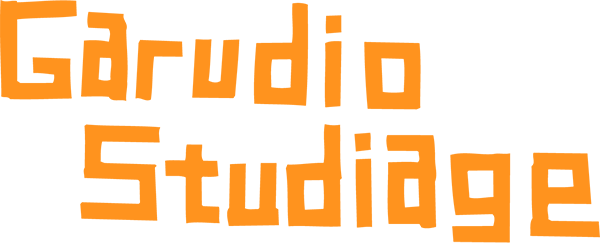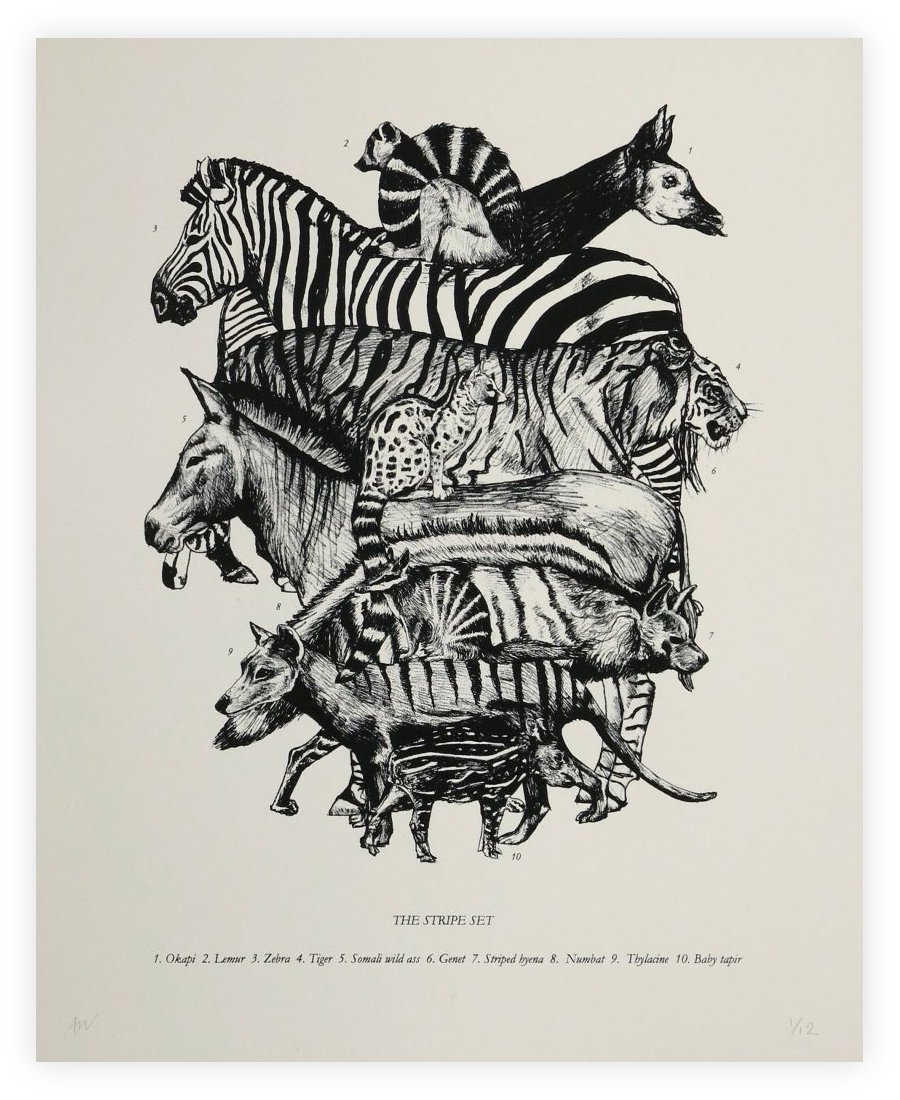Natural History Prints
A Selection of artworks informed by Natural History Illustration
Sea Monster Soup
This 3 colour screen print is inspired by the 1850 engraving 'Monster Soup commonly called Thames Water' by William Heath, a satire of a microscopic examination by Arthur Hassell of the water supplied to the inhabitants of London portraying the ‘monsters’ found in a drop of water from the Thames. Just 50 years ago, the Thames was so polluted it was declared "biologically extinct", too dirty for anything to survive there. But sightings of various marine mammals and other species over the last few years confirm that the river is springing back to life. There have been regular sightings of harbour and grey seals, dolphins and harbour porpoises, and of course the ill-fated journey into the Thames by the ‘River Thames Whale’ (northern bottlenose whale ) in 2006.
The Stripe Set
This piece is about classification and order of nature and animals by humans. Although the style of drawing and addition of text alludes to traditional natural history illustrations, the categorising (striped animals) and composition of the animals is created in a more folk taxonomic manner, making a more unusual visual form. Folk taxonomies are distinguished from scientific taxonomies in that they are more associated with social knowledge and everyday speech.
Unicorn?
In his book ‘Lore of The Unicorn’, Odell Shepard describes the Unicorn as being interesting ‘almost entirely as a denizen of “The Monarch Thought’s Dominion”’ i.e. as a creation of man’s imagination.
There are many animals caught up in the unicorn legend, which have been commingled over time to produce various descriptions of the mysterious beast. These include the rhinoceros, the ibex, goat, ox, narwhal, okapi, and even the orangutan! The story of the unicorn has been entwined with those of real animals, most just as strange and fascinating themselves, and reveal just as much about us and our engagement with the natural word, as they do about the unicorn itself. Here are a few of them represented in this print.
Each of these limited edition screen prints have been individually hand coloured with water colours, alluding to traditional natural history illustrations to illustrate a very unscientific history of nature.



